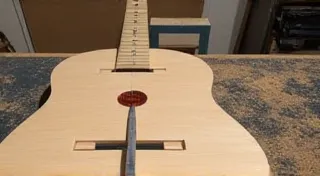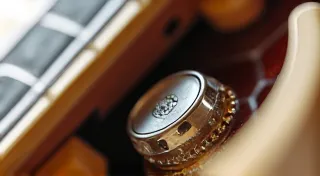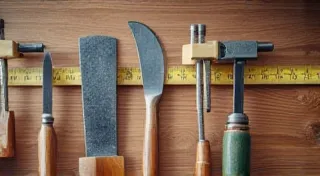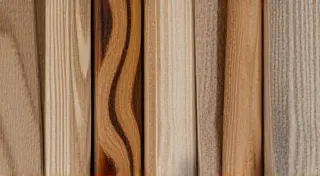Finishing Your Guitar: Simple and Affordable Options
So you’ve spent the time and effort to build your first electric guitar – congratulations! You’ve routed the body, glued the neck, wired the electronics... now comes the final, crucial step: finishing. A good finish protects the wood, enhances the beauty of the grain, and contributes significantly to the overall tone of your guitar. But finishing can seem daunting, especially for beginners. This article explores simple, affordable options that are perfect for DIY guitar builders just starting out. Building a guitar from scratch is a deeply satisfying process. Understanding the fundamentals, as described in Your First Electric Guitar: A Beginner's Guide to Solid Body Construction, lays a solid foundation for any build, including the finishing stage.
Why Finish Your Guitar?
Beyond aesthetics, a finish serves several vital functions:
- Protection: Wood is porous and susceptible to moisture, scratches, and damage. A finish creates a barrier.
- Appearance: A finish can highlight the natural beauty of the wood or create a custom look.
- Tone: Different finishes can subtly affect the guitar’s resonance and sustain. The impact of even seemingly minor aspects of guitar construction, from wood selection to hardware choice, contributes to the final tone.
Affordable Finishing Options for Beginners
Let's dive into some realistic and budget-friendly finishing methods.
1. Oil Finishes: Easy and Natural
Oil finishes are arguably the easiest to apply. They penetrate the wood, creating a natural look and feel. Common choices include:
- Linseed Oil (Boiled): Readily available at hardware stores, boiled linseed oil dries faster than raw linseed oil. Multiple thin coats are key.
- Tung Oil: Offers slightly more durability than linseed oil and dries to a satin finish.
- Walnut Oil: Dries relatively quickly and imparts a warm tone.
Application: Apply thin coats with a clean cloth, allowing each coat to fully dry before applying the next. Lightly sand between coats with very fine grit sandpaper (400 grit or higher) to smooth out any imperfections. Expect to apply 3-5 coats for adequate protection. Achieving optimal playability often requires careful attention to detail in the setup process – explore best practices for Setting Up Your Guitar: Action, Intonation, and Relief to complement your finishing work.
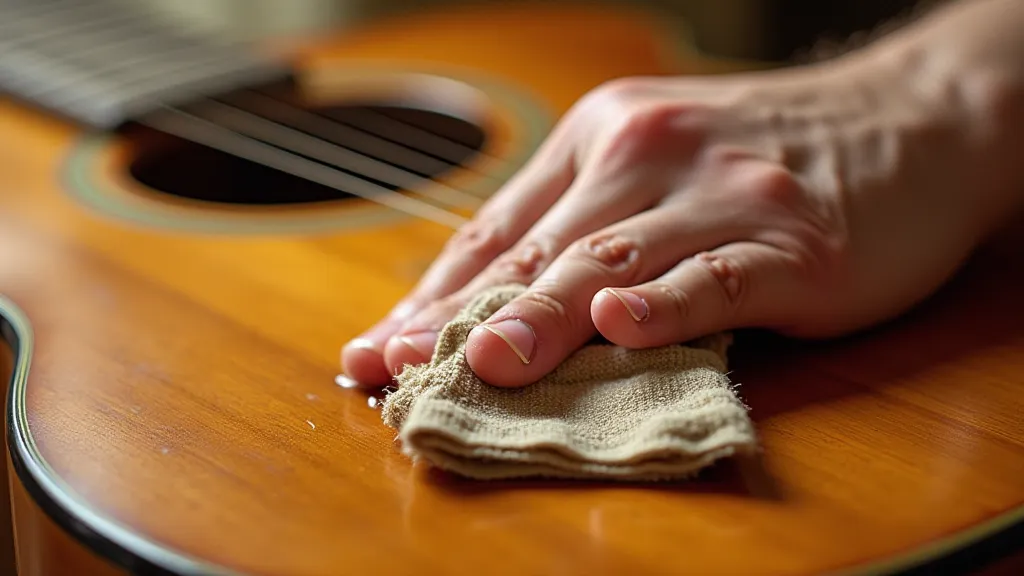
2. Spray Paint: The Quick and Dirty Approach
While not the most traditional, spray paint offers an incredibly fast and affordable way to finish your guitar. It's ideal if you're looking for a solid color and don't want to spend hours applying multiple coats of oil. Beyond aesthetics, consider the entire build. Even the seemingly smallest components, like hardware, can impact your budget – learn how to find Budget-Friendly Guitar Hardware: Where to Save Money without sacrificing quality.
Considerations: Spray paint isn’s as durable as other finishes, and it can chip more easily. Choose a high-quality spray paint designed for wood or metal. Primer is absolutely essential for good adhesion.
Application: Mask off any areas you don't want to be painted (like pickups and the neck pocket). Apply several thin, even coats, allowing each coat to dry thoroughly. Sand lightly between coats to ensure a smooth surface.
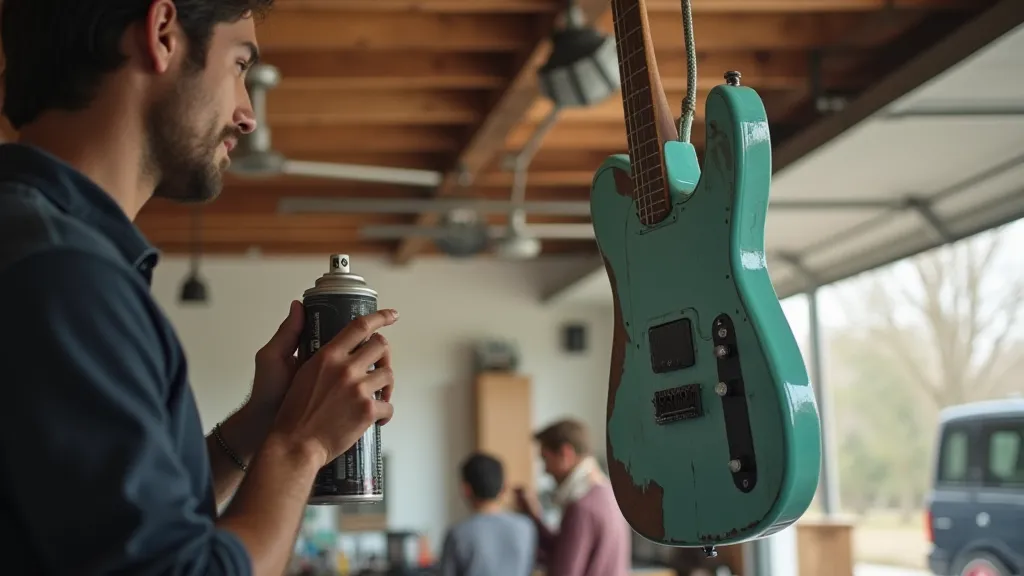
3. Staining: Bringing Out the Wood’s Character
Staining enhances the natural grain of the wood, allowing its character to shine through. It’s a good option if you love the look of the wood but want to deepen or change its color.
Process: Stain is typically applied *before* a clear topcoat (like a thin coat of oil or spray lacquer). Apply the stain evenly, following the grain of the wood. Wipe off any excess stain after a few minutes. Once the stain is dry, apply a clear topcoat to protect it. The resonance of the wood itself plays a crucial role in the final tone, and this can be further enhanced by considering harmonic principles, as discussed in fascinating detail regarding The Fibonacci Sequence in Fretboard Geometry: A Harmonic Resonance.
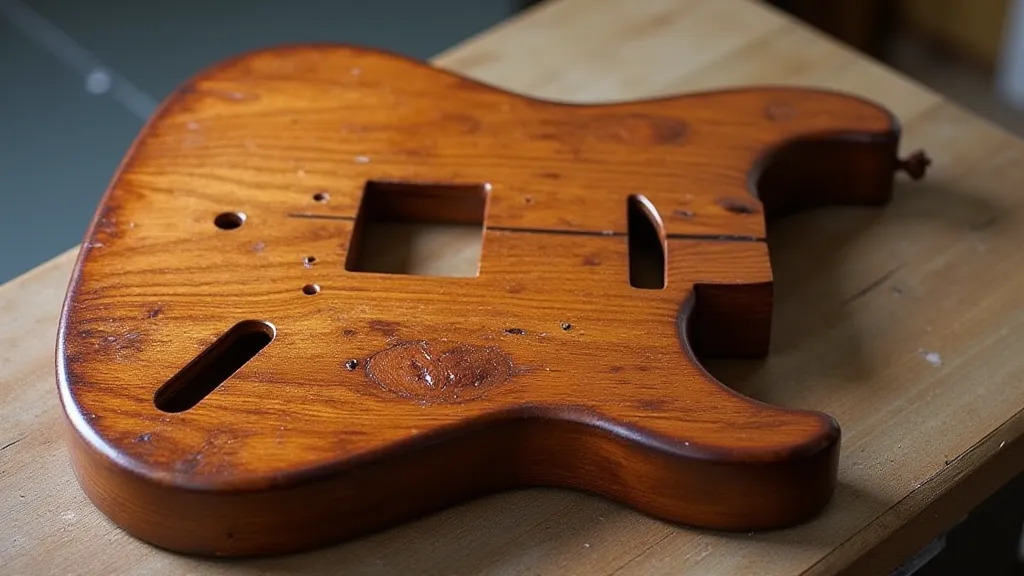
Beyond the Basics: Advanced Finishing Techniques
Once you’re comfortable with the foundational techniques outlined above, you can explore more advanced options. These might include:
- Lacquer Finishes: Offering durability and a classic look, lacquer requires more specialized equipment and experience.
- French Polishing: A labor-intensive but beautiful hand-applied finish that produces a deep, lustrous sheen.
- Cellulose Finishes: Known for their ability to highlight the wood grain and offer a traditional look.
Important Tips for Beginners
- Practice on Scrap Wood: Before applying any finish to your guitar body, practice on a piece of scrap wood of the same type. This allows you to get a feel for the application process and see how the finish looks.
- Thin Coats are Key: Multiple thin coats are always better than one thick coat. Thick coats are more likely to drip, sag, and create an uneven finish. Remember, consistent application is paramount to a professional finish.
- Ventilation is Crucial: Always work in a well-ventilated area when applying finishes, especially spray paint and lacquer. Safety should always be a priority, especially with solvents and volatile compounds.
- Safety First: Wear a respirator or dust mask when sanding or spraying finishes. Protecting your respiratory system is non-negotiable.
- Temperature and Humidity: The ambient temperature and humidity levels significantly impact the drying and curing process of many finishes. Consult the manufacturer's recommendations for optimal results.
- Sanding Between Coats: Consistent and proper sanding between coats is essential for achieving a smooth and flawless finish. Use progressively finer grits of sandpaper to remove imperfections and ensure proper adhesion.
- Understanding Finish Chemistry: Each type of finish has its unique chemical properties and drying mechanisms. Understanding these properties will help you troubleshoot problems and achieve the desired results.
Finishing your guitar is a rewarding part of the building process. Don't be afraid to experiment and have fun! Even experienced luthiers often encounter challenges, so embrace the learning process and enjoy the journey. With practice and patience, you can achieve a beautiful and durable finish that will enhance the beauty and playability of your instrument.
